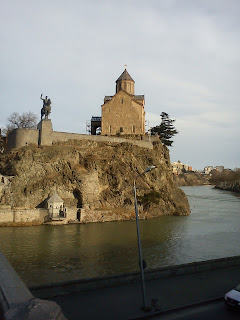Be a part of a place: enjoy the local food and wine
The spread of agritourisms/farmhouses (see https://sustainableexperience.blogspot.com/2020/09/agritourism-first-part.html and https://sustainableexperience.blogspot.com/2020/09/agritourism-second-part.html ) is just one of the symptoms of the growing link between tourism and nature.
To a growing number of travelers tourism is more and more about the desire to be outdoors, immersed in streets and landscapes to experience a symbiosis with local nature, products and traditions.
Factor this expanding strain of the food and wine sectors.
The case study here is Italy, and how these sectors have evolved over the past decades. Anyone who was a child in the 1970s may remember that for the average Italian going out for lunch/dinner meant going to a pizzeria or restaurant. For the after Second World War generation, emerging from the rubbles of bombed cities, misery and low incomes, being able to effort a peaceful pizza with family and friends in a close-by pizzeria meant something. To some, it was a status symbol, a huge personal achievement: a luxury unthinkable for many until a few decades earlier.
Pizzerias and restaurants certainly remain an essential point of reference. But alongside these traditional channels, a series of culinary events of various types and sizes have been created. They catalyze the attention of tourists, and contribute to boost the food and wine tourism.
Food and wine tourism is now a sector that stands on its own legs in Italy. It has established as a core business in tourism and it always goes hand in hand with local traditions and landscape. From large events such as VinItaly (https://www.vinitaly.com/) integrated in urban areas, to Slow Food presidia, to festivals, to various events around a product or local specificities, to tours offered 365 days a year in a production area: what happens is that tourists/visitors grab their purses or put on their backpacks to rediscover themselves as travels/testers.
In short, eating no longer means just putting legs under a table in an enclosed environment. There are squares, stands, cellars, benches, tables, cartons, tastings and cicchetti (https://www.lexico.com/definition/cicchetti ).
We are more than willing to eat under the sky, and to enjoy what has become a pleasure, we are ready to brave the inconveniences of a supplier that cannot offer the same standard of services of a restaurant.
For the same immense pleasure to eat outdoor and to taste something unique, something you wouldn’t normally find in a menu, we are ready to travel to a Slow Food presidium. I’ll discuss the Slow Food movement in another post, for now I’d like to dwell on the relation between the strong and very diversified street food movement and the restaurants/pizzerie.
This phenomenon of street food caused different reactions in the world of catering, depending on both what kind of implications it has had in terms of increased attendance, both in the integration spaces of traditional catering, and in intra-community dialogue and with the organizers.
Where there have been spaces - physical, social, and cooperative - restaurants and other food shops have benefited by joining the trend. In short, instead of attracting tourists to their own restaurants, they can be found on the street, in the form of a food and wine stand among other stands, with a menu and an offer tailored for the location and the gastronomic theme, if any, but which, nevertheless remains representative of their offer. And this applies not just to restaurant, but also to bakery, piadineria / focacceria, bar / roasting, pastry shop, pizzerie and so on and so forth.
The same can be said for any kind of food products from honey, to fruit, to vegetables. Many local producers do not normally sale directly to consumer, or they do not have a point of sale in tourist areas. They can take advantage of gastronomic events to place themselves in the center of a tourist destination, making available products and potentially create interest for their own location. This renewed interest for eno-gastronomic fairs has proved to be a viable source of tourism redistribution.
Tourists discover a product, and the product leads them to a place that becomes a new destination. Very motivated tourist, or extremely valuable products may trigger trips to relatively remote areas, which would be otherwise hard to promote
In short, if on one side that it is legitimate for restaurateurs to worry about the growth of the culture of street food, on the other an honest and constructive debate among all operators can make this process a winning strategy for all.
A diversification in the supply can indeed generate a more competitive environment, but if well-articulated and planned it can stimulate the demand. And a fully sustainable one.


Commenti
Posta un commento